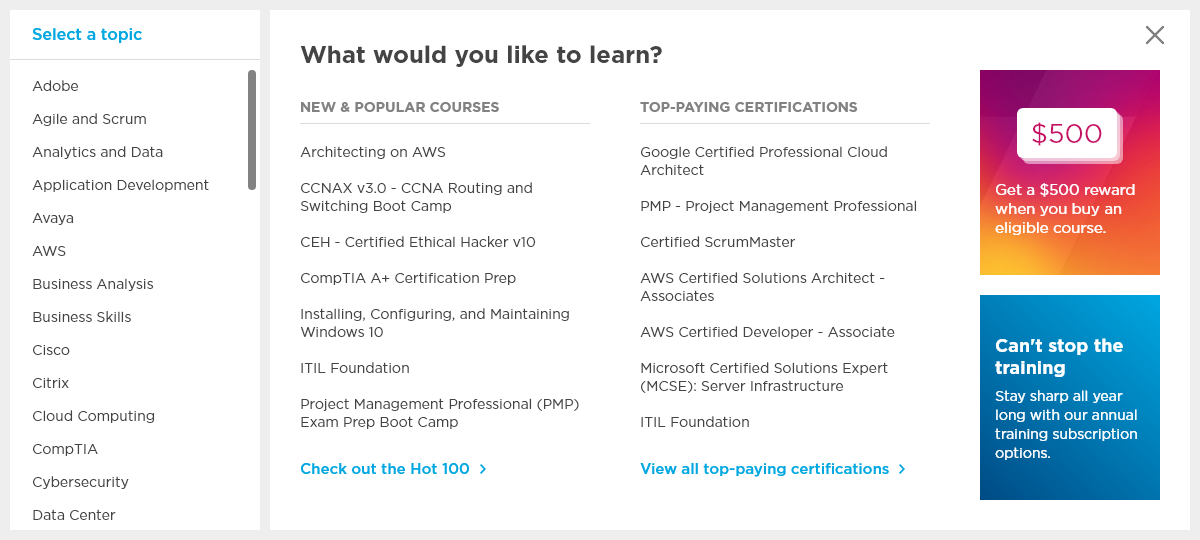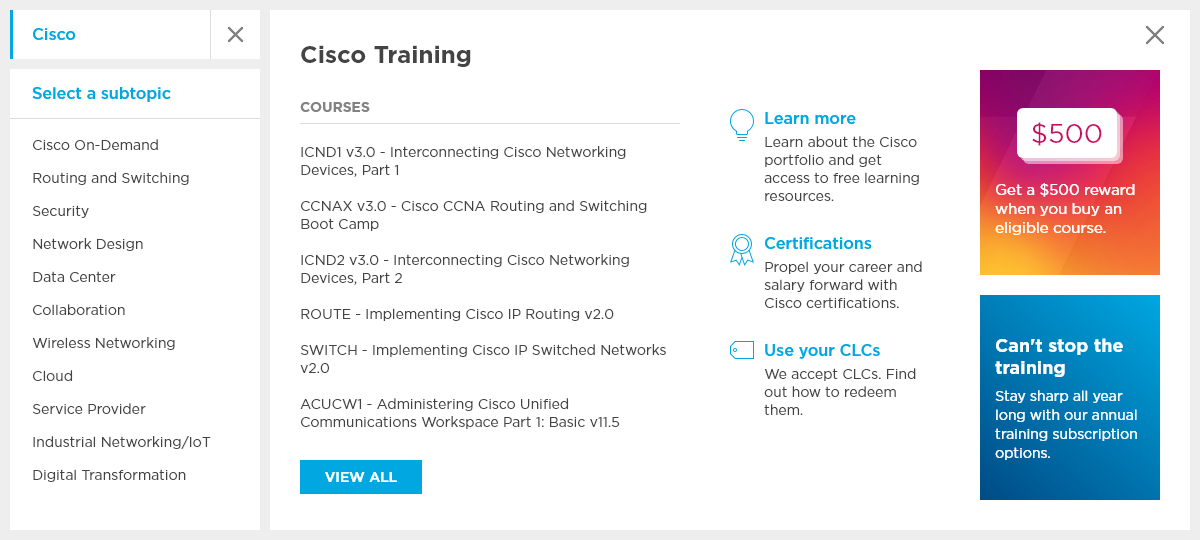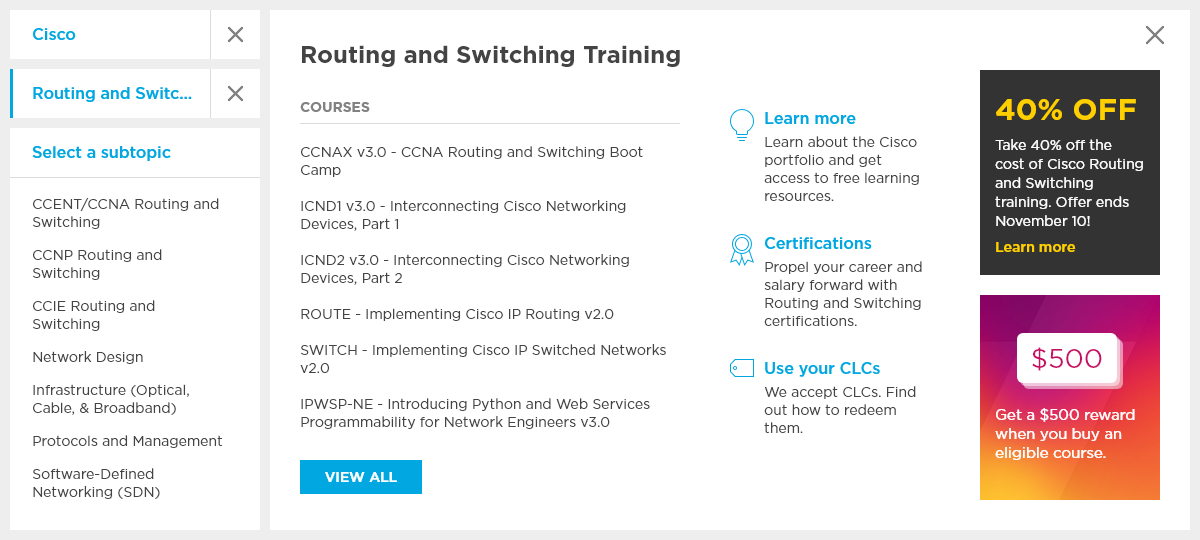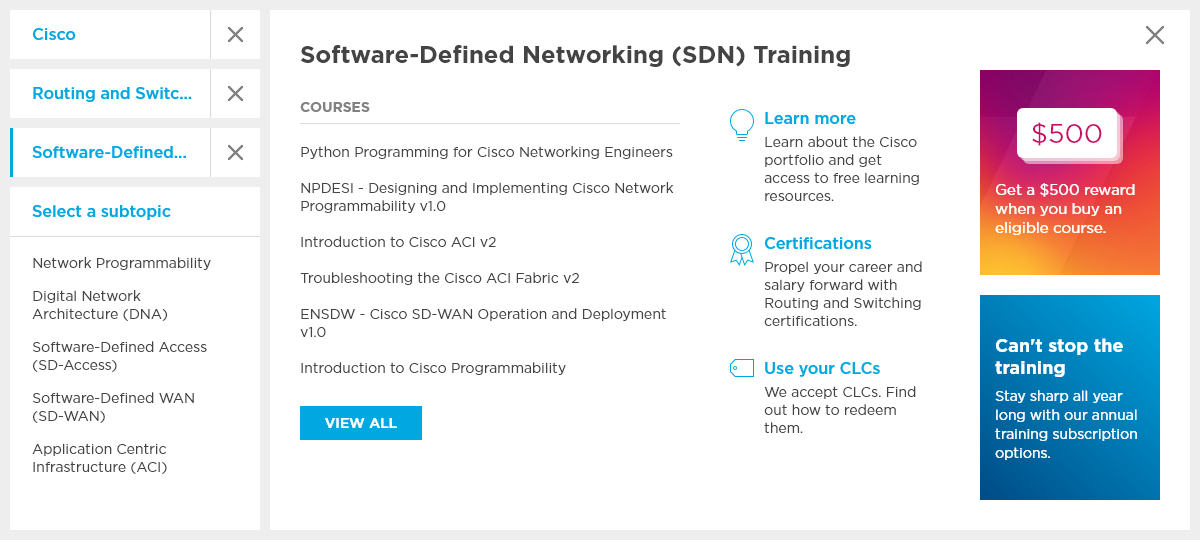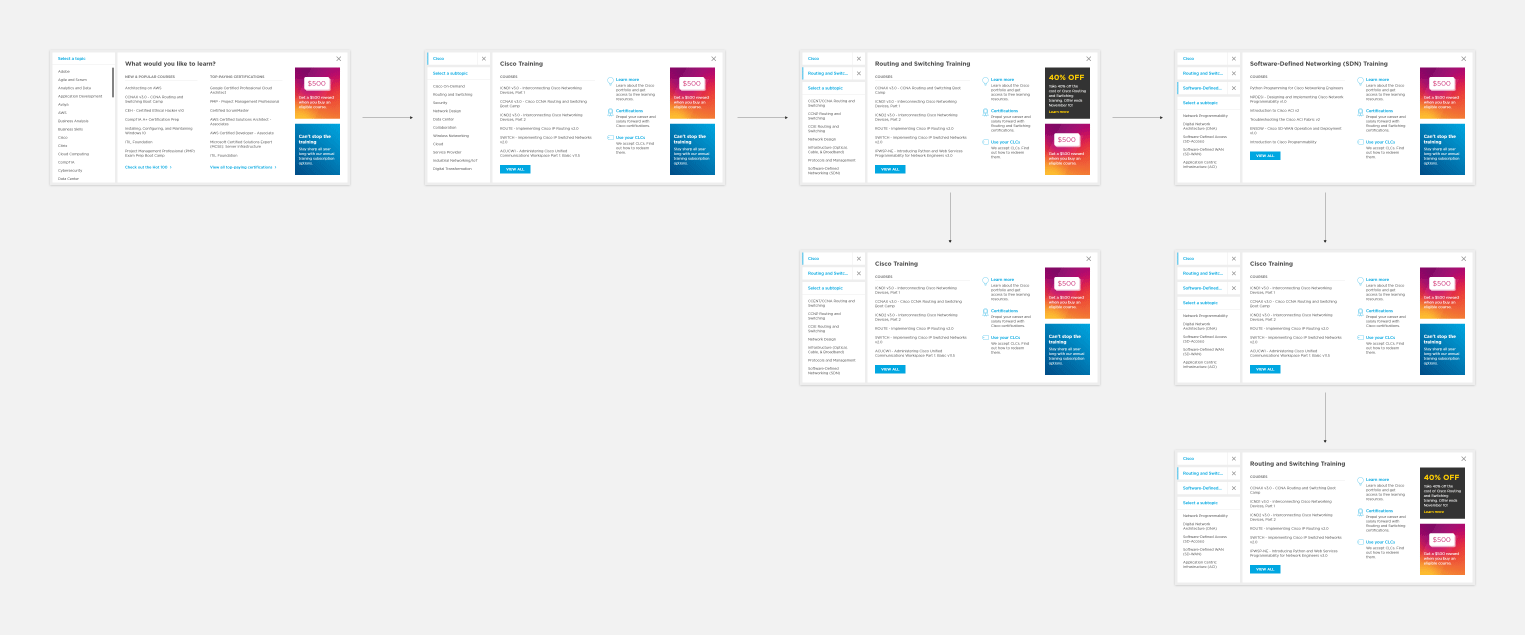| # of levels deep | # of root topics |
|---|---|
| 1 level deep (top-level only) | 8 |
| 2 levels deep | 19 |
| 3 levels deep | 13 |
| 4 levels deep | 2 |
| 5 levels deep | 1 |
| 6 levels deep | 1 |
Course Catalog
A proof of concept for enhancing our course catalog
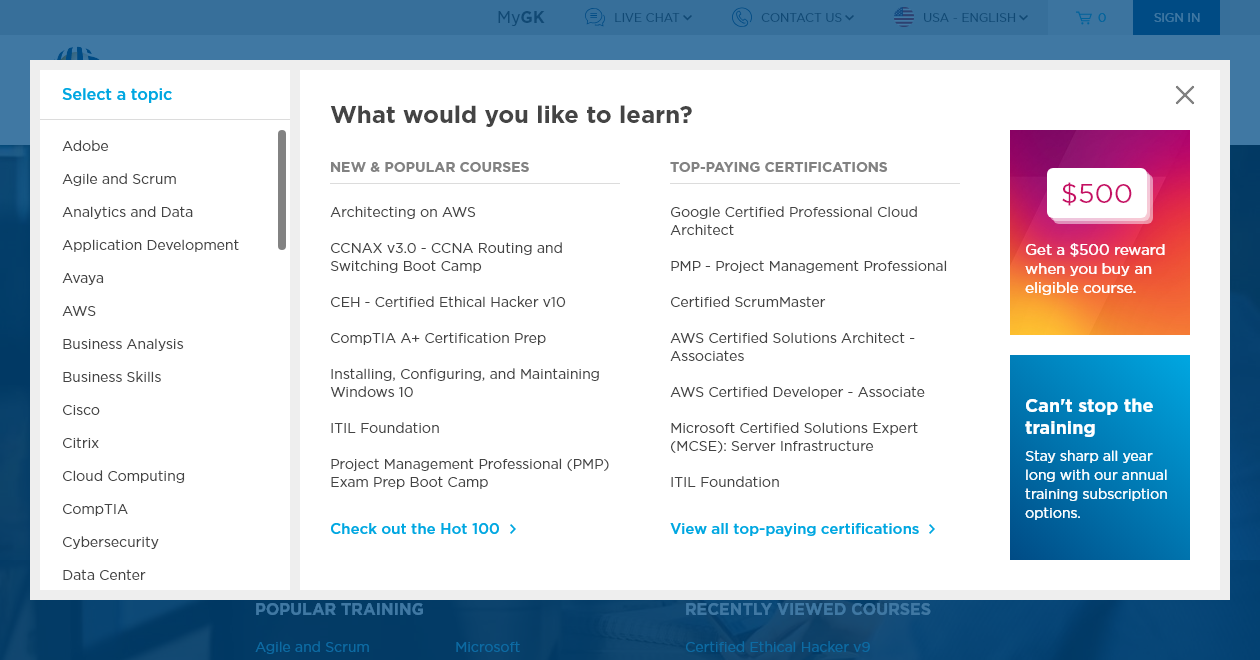
At Global Knowledge, we sell training. Our course catalog is the entry point into our entire product offering. It contains all of our training courses organized by topic or technology provider. Wanting to make the catalog more accessible and to get people into the course progression quicker, we set out to create a mega menu in our top-level navigation. While exploring solutions for a static, traditional mega menu, I also explored other interactive solutions that would allow users to navigate the course catalog's additional levels of depth.
Pain point
With over 40 categories and 3,200 courses, it can be overwhelming and confusing to find the right course.
Goal
To help users find the training they need quicker, more efficiently, and more confidently from any page of the website.
Research
User flow
The user flow for a typical transaction.

Users can drop into the funnel at almost any stage. When users land on course pages (i.e. product pages), we see a fair amount of breadcrumb and navigation usage, indicating that users want to continue searching for other courses, or are comparing their options.
My hypothesis was that a more dynamic, easy-to-access catalog tool would help make browsing for courses easier.
Portfolio Depth
It was important to understand the hierarchical structure of our course catalog and how many levels of descendants exist below the top-level topic or tech provider. This information would help inform how many subtopics may need to be represented before forcing the user to make a choice. The table below tallies by levels of depth.
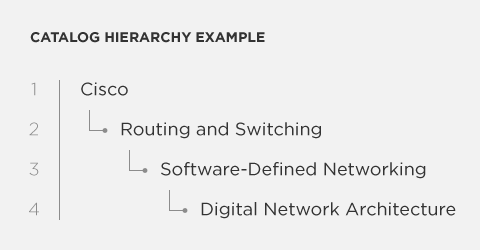
Challenges
- Complexity – The course catalog is long and occasionally complex.
- Different topics, same name – A single topic can be a parent category as well as a child of another parent. For example, "Networking" could be its own top-level category and a child of Cisco, both containing potentially different sets of courses.
- Consistency – Each topic and tech provider is a little different, and there is no guarantee of consistency in how they are structured.
- Scalability – How scalable does this tool need to be? What kind of changes to the catalog information architecture (IA) can we support over time?
- System limitations – I had to be mindful of how our backend systems store the course catalog data and how our front-end systems access that data.
Ideation
Sketches
Some preliminary sketches and notes aimed at better understanding the problem, identifying obstacles, and working through possible solutions and opportunities.
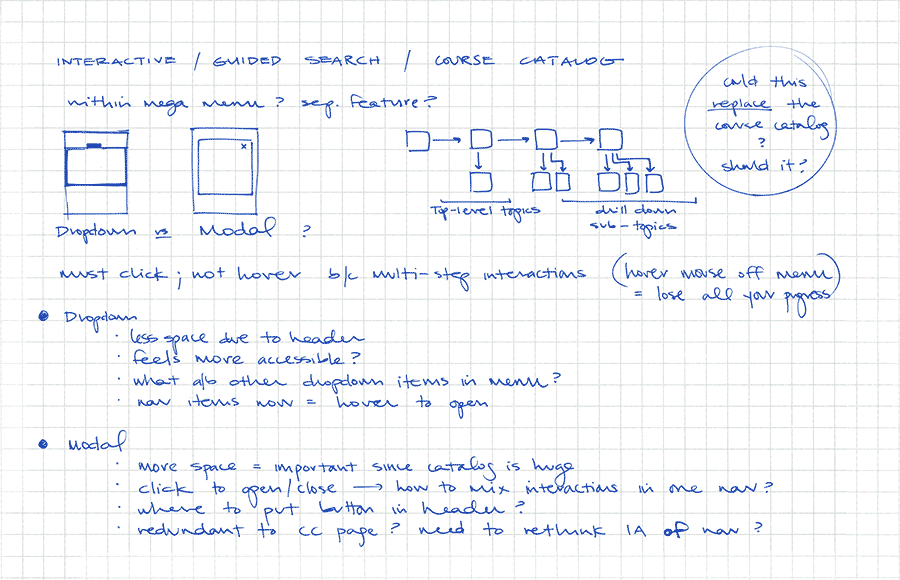
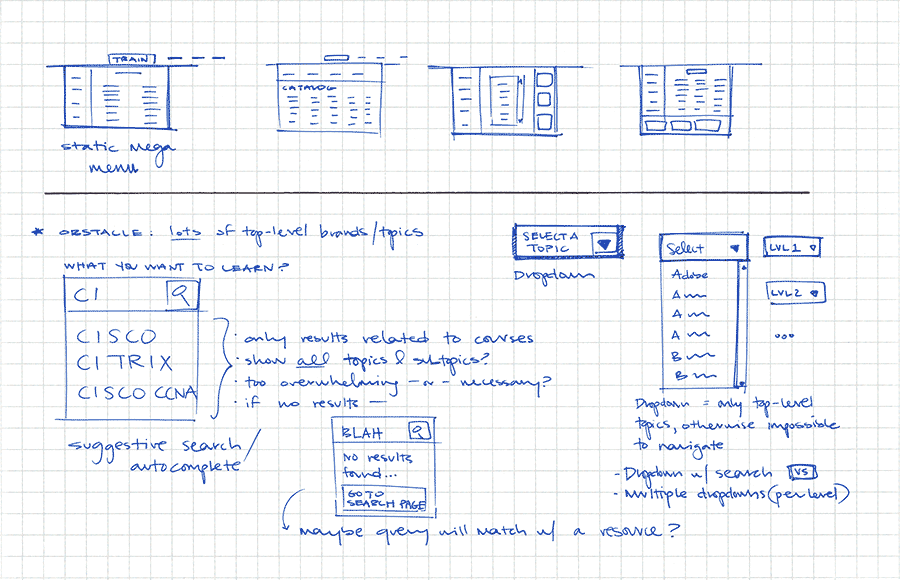
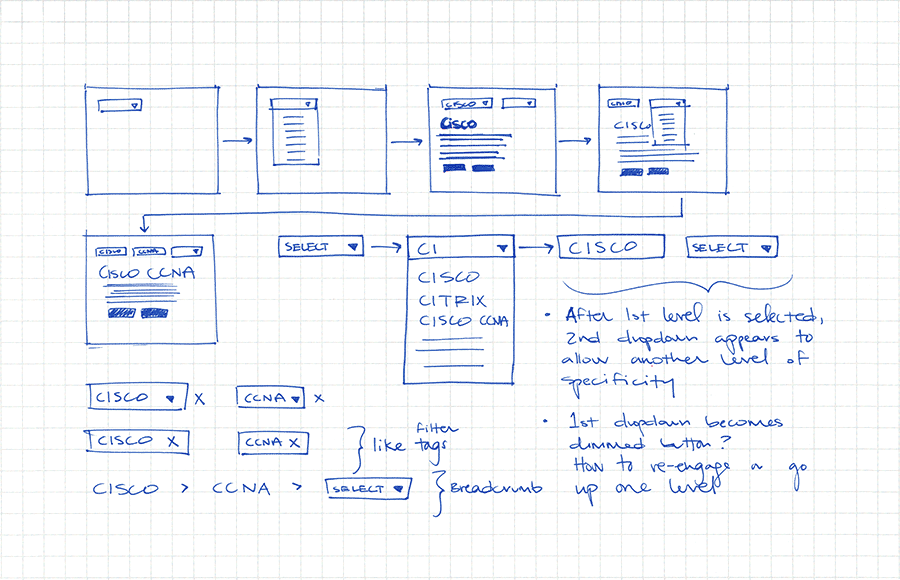
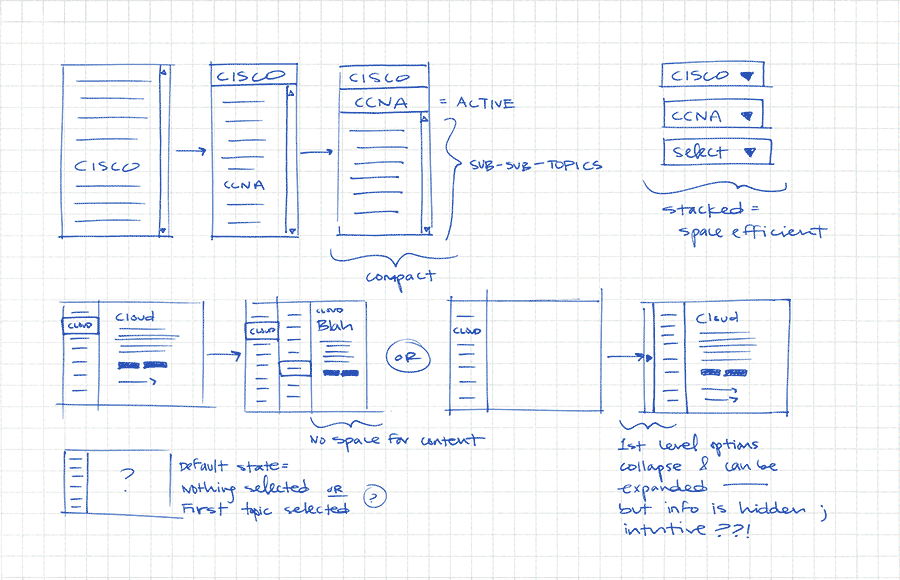
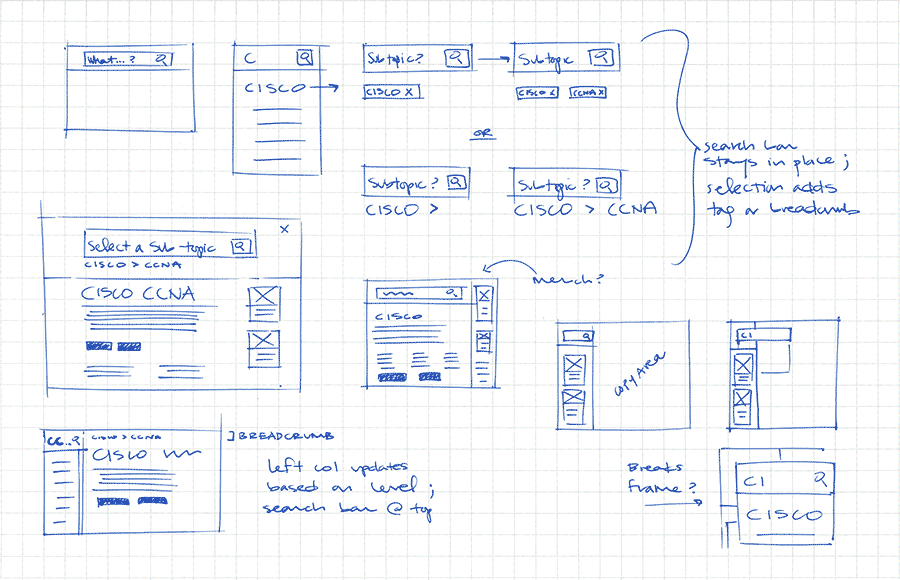
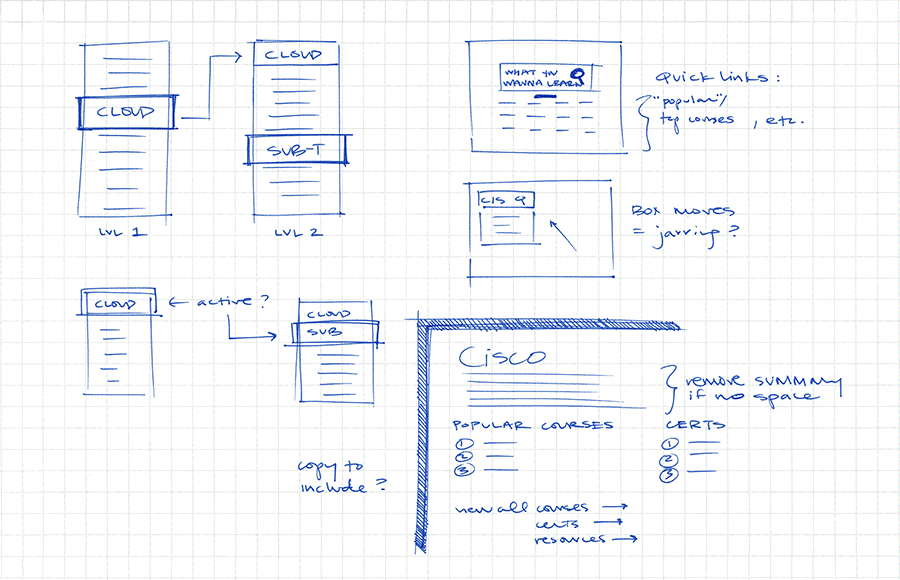
Wireframes & iterations
Once I had the basic framework for how this feature would function, I switched to digital wireframes to work with more accurately sized elements. I worked through a few dozen iterations and design solutions.
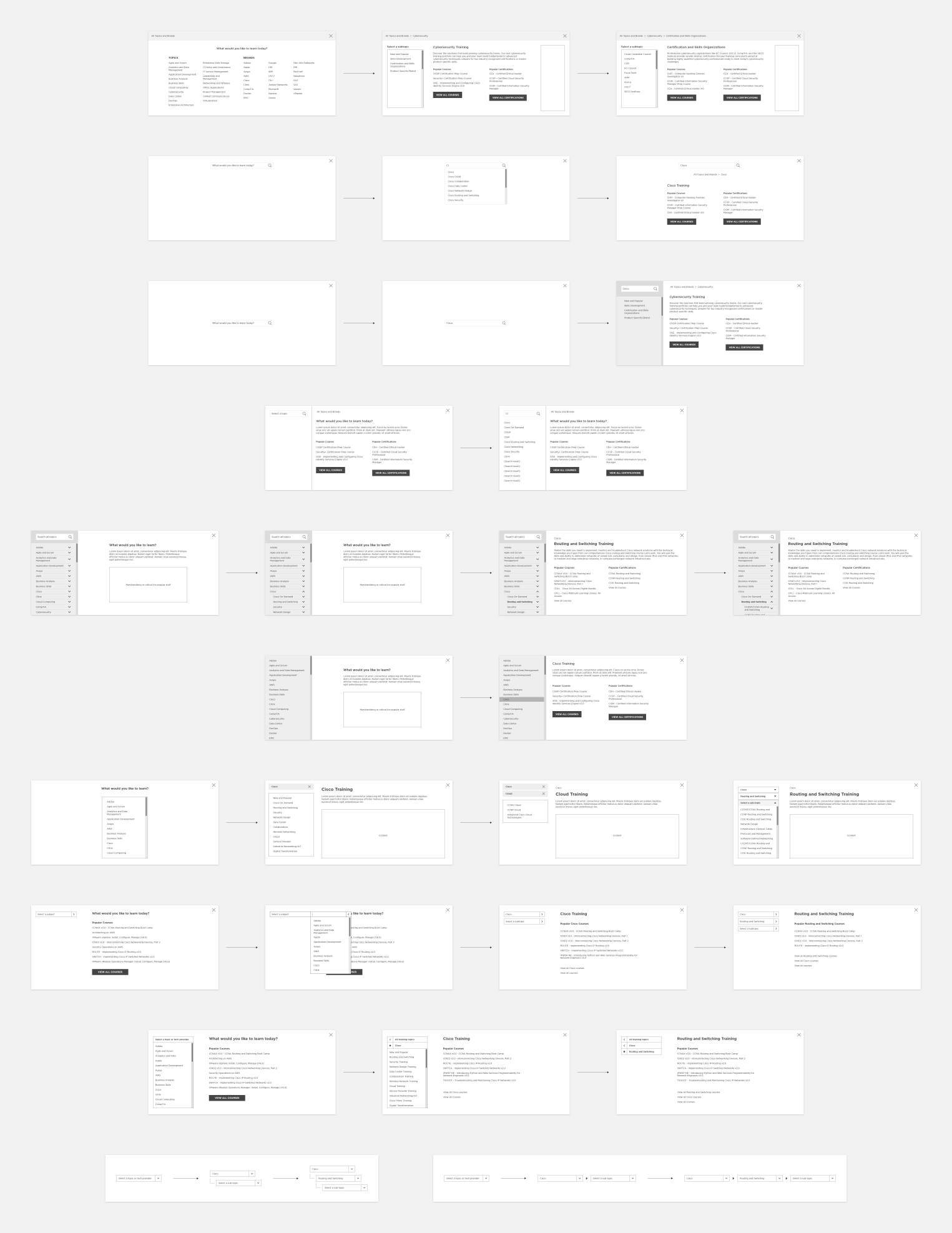
Final design
Sample screens
